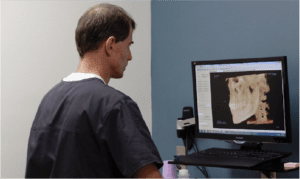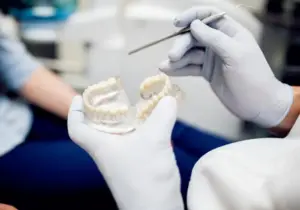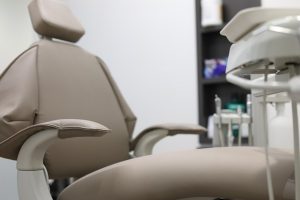Orthognathic surgery, also known as corrective jaw surgery, is applied when there’s something wrong with your bite. The structural issues may be congenital, health-related, or a result of facial trauma. Jaw surgery manipulates the position of the upper and lower jaws so they align correctly.
Jaw surgery can not only correct a wide range of skeletal and dental irregularities, including poor jaw and teeth alignment, it can dramatically improve chewing, speaking and breathing, along with one’s appearance. This type of surgery can be done any time after bone growth stops – around ages 14 to 16 for girls and ages 17 to 21 for boys. It can involve the upper or lower jaw, chin or one or more of these.
Who Need Jaw Surgery?
If you are experiencing any of the conditions below, you may be a candidate for jaw surgery:
- Trouble chewing, biting or swallowing
- Recurring jaw pain or headaches
- Excessive tooth wear
- An open bite, where there is a space between your top and bottom teeth when you close your mouth
- Your face looks out of balance
- Birth defect or injury
- Receding or protruding jaw
- Difficulty putting your lips together
- Mouth breathing or sleep apnea
Common Jaw Surgeries
There are three common types of corrective jaw surgeries our maxillofacial surgeon often performs:
- Open Bite
In this surgery, the upper jaw is shortened by removing bone tissue until the bite is able to close properly. The upper jaw is then reconstructed with plates and screws.
- Protruding Lower Jaw
To pull the jaw back, bone in the rear jaw is separated from the front portion and modified. This may include repositioning the mandible and/or removing bone tissue to shorten the lower jaw.
- Receding Lower Jaw
To add space, the bone in the lower jaw is separated from its base and modified. The lower-tooth jaw and a portion of the chin are moved forward. In some cases, the bone may require augmentation, which may include plates, screws, and/or jaw bone grafts.
The Process of a Typical Jaw Surgery
Working together, your orthodontist and oral surgeon will put together a treatment plan, which may involve x-rays and photos or models of your teeth.
Most people are fitted with braces before surgery to get the teeth into optimal alignment. You may need to wear the braces for 12-18 months before jaw surgery can be performed. 3D computerized tomography scanning, computer-guided treatment preparation, and temporary anchoring tools may help move your teeth to shorten your braces period.
Some situations require reshaping teeth, covering teeth with crowns, or both. Occasionally, these steps make jaw surgery unnecessary. Most of the time, there are not visible scars from jaw surgery, as the surgery is performed inside the mouth.
In the surgery, which happens under general anesthesia, the jawbones will be cut and moved into proper positions. The bones are then secured, as needed, with small bone plates, screws, wires and/or rubber bands. These fasteners — smaller than braces brackets — merge into the bone structure over time.
If new bone is needed to augment the jaw, it can be taken from your rib, leg or hip. In some cases, existing jawbone can be restructured to fit correctly.
What to Know About Jaw Surgery Recovery
The main thing to know about recovering from a jaw surgery is that it’s primarily a process of care and patience. When you are released from the office or hospital, you will be given instructions regarding what to eat, how to brush and floss, activities to avoid, and medications for pain.
You will probably be able to return to regular activities in a few weeks, but initial jaw healing ordinarily takes a month of more. It will be an additional 4-6 weeks after before you are completely healed. Bone tissue is the slowest-growing tissue in the body; it needs the right environment, the right attention, and ample time.
After preliminary healing, you will probably get braces again to properly line up your teeth in your new bite. Once the braces are taken off, retainers may be needed to hold your teeth in position. Our patients have been amazed at the results of jaw surgery. But from beginning to end, the process can take years. So before you make a decision, it is important to understand the commitment involved.
Jaw surgeries are by nature invasive; they require a skilled and gentle maxillofacial surgeon to properly navigate and to set you up for optimal recovery. Dr. Puckett is experienced in a wide array of orofacial surgeries, including corrective jaw surgery. Focused on precise, friendly, comprehensive care, his patient-focused approach to jaw surgery sets every patient up for success.










